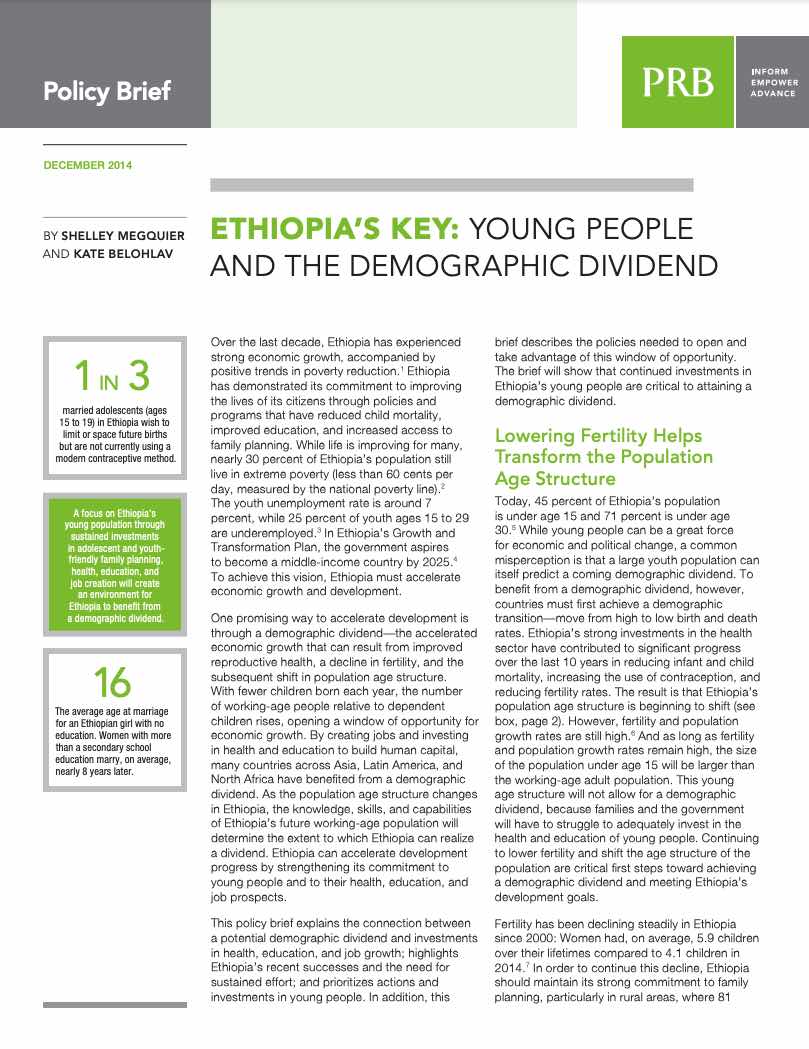Ethiopia’s Key: Young People and the Demographic Dividend
This policy brief and accompanying fact sheet explain the connection in Ethiopia between a potential demographic dividend and investments in health, education, and job growth; and prioritize actions and investments in young people.




